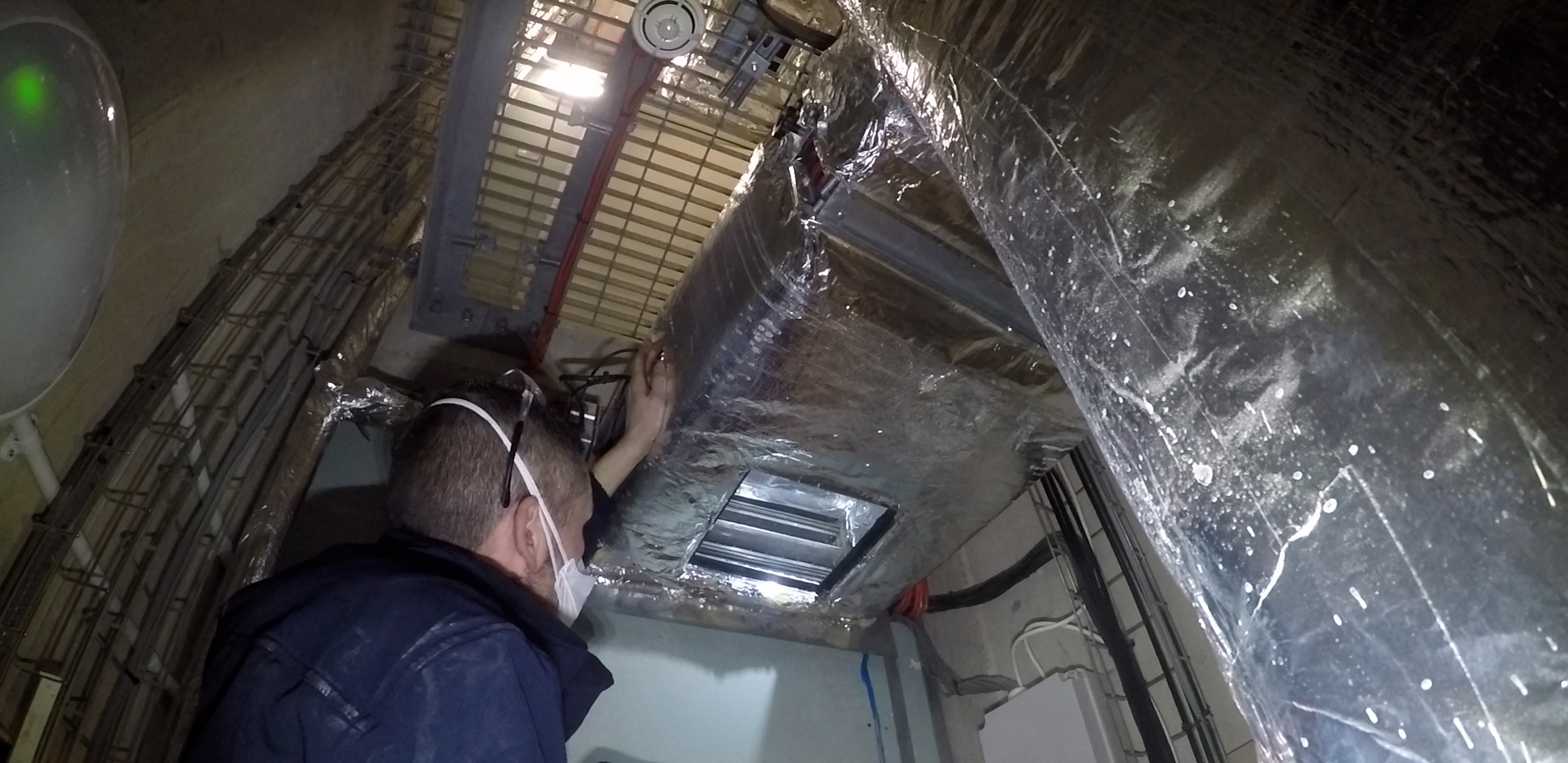
Fire and Smoke Damper Inspection and Testing
Fire and smoke dampers are located in your ductwork system at any point where the ductwork breaches the fire compartment.
Dampers are essential in preventing the spread of fire and smoke, and the law sets out clear rules and guidance for their inspection, testing and maintenance.
What is the fire compartment?
Your building is made up of several fire compartments to prevent the spread of smoke and fire. Each is designed to contain smoke and fire for a period of time; this is referred to as the fire rating. Compartments are typically entire floors of buildings, but in larger buildings and purpose-built structures, such as hotels, a compartment can also be a single room.
What are dampers?
Ductwork runs throughout your entire building, providing fresh air and heat. Where it is necessary for ductwork to breach the fire compartment a fire damper is installed. There are several types of damper, but the principle of how they work is the same. In the event of a fire, a fire damper closes to maintain the fire barrier, bridging the gap in the fire compartment, whereas smoke dampers open or close to control the pathway of smoke.
Typically, in a space of 1,000 sq. m. we would expect to find between 40 and 80 dampers. This can be significantly higher depending on the layout or design of the building and the compartmentation.
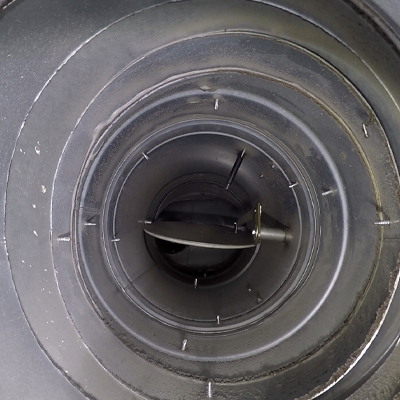
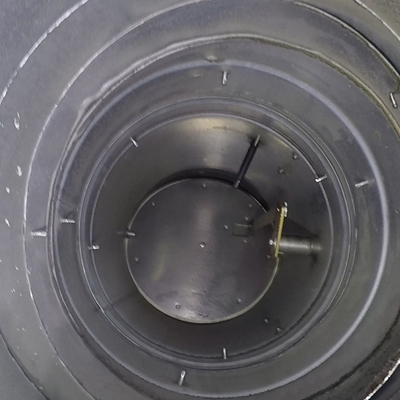
Your duties
The legal requirements for fire and smoke damper inspection and testing are clear. The Regulatory Reform (Fire Safety) Order 2005 clearly sets out that it is the employer’s responsibility to maintain their fire safety systems. Your dampers are a key part of your fire safety system.
What is required?
You must first identify all the dampers in your building. This is done using your schematics or, if required, a physical inspection can be undertaken.
As dampers are located throughout your ductwork it is essential, and a legal requirement, that they are accessible. Builders’ hatches and access panels may need to be installed; our team can assist with this as part of our complete service.
To achieve compliance, it is imperative that all dampers are located and then tested.
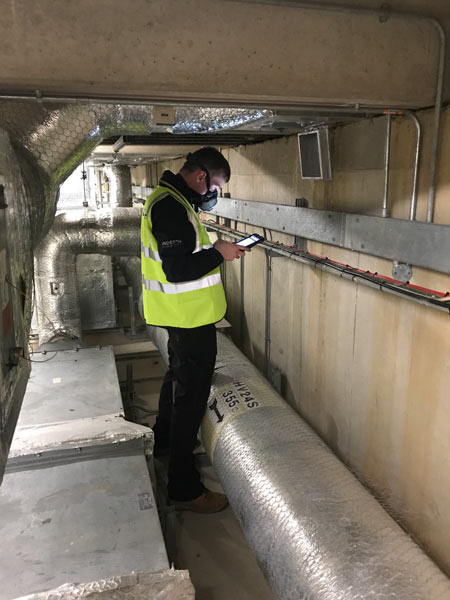
What is involved in damper inspection and testing?
A visual inspection of your dampers will identify surface damage or anomalies in the installation. Many contractors simply don’t understand the function of smoke and fire dampers and can inadvertently impair their operation.
Our teams have discovered dampers that have been installed upside down – which would make them inoperable as many dampers require gravity to function. Others have been incorrectly installed, with extensive damage to the fire compartment, making them ineffective and the whole system non-compliant. Interesting discoveries include a fork and spoon holding the damper open (we never did find the knife). One of the most shocking findings was Unistrut fixed to dampers to permanently hold them open – yes, somebody paid a contractor to ruin their fire safety system. We regularly see other services using dampers as conduit for networking cables and similar.
If you choose to work with Indepth our team will not only identify issues like these, but also help you to find solutions. We will not simply leave you with a report stating your system is not compliant.
Once identified, our team will test each damper. A drop test checks that the damper will operate should a fire break out. The mechanism which releases the damper, usually a fusible link or thermal spring, is manually activated and we check that the damper closes completely. We then reset the damper to ensure it is ready for operation.
A visual inspection and complete testing are your reassurance that your system is fully operable, and it is the only way to achieve compliance.
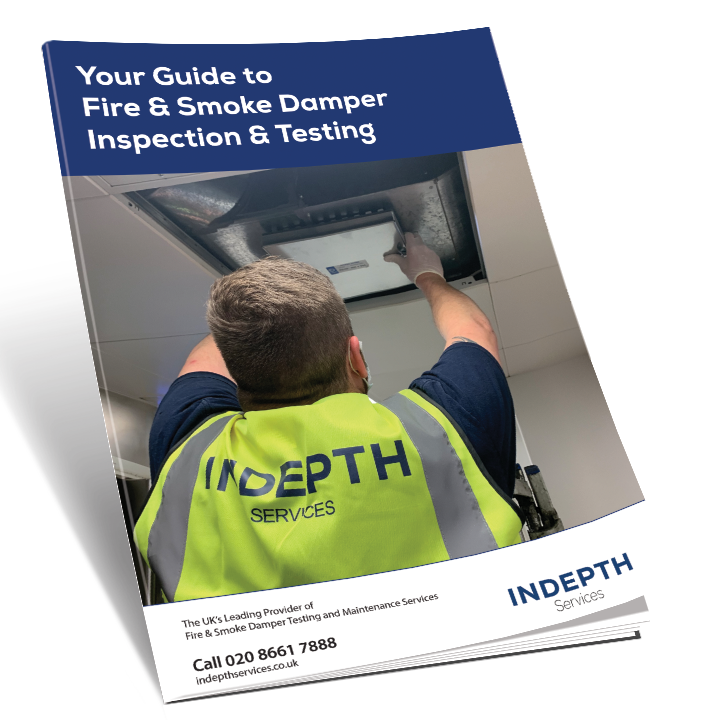
Reporting
Our team have developed an industry-leading fire damper inspection and testing reporting platform. It was built to comply with the standards set out in BESA Technical Bulletin VH001. You can learn more about VH001 here.
Whereas standard reporting will give you a list of issues identified, our reporting goes further. We provide you with comprehensive details of all dampers tested, including photographic evidence of the damper before, during, and after testing.
If any issues are identified, we provide further photographs and advice on remedial steps, including detailed costings.
Your dedicated resource
Our team have a dedicated portal for fire damper and smoke damper inspection and testing services.
Your next steps
Call our team on 020 8661 7888 to discuss how we can help you achieve fire and smoke damper compliance in your buildings, or click the button to get a quote.
